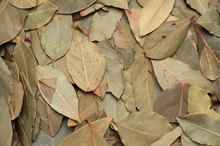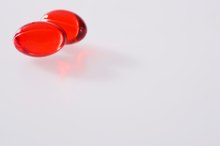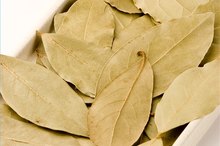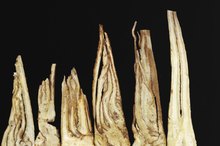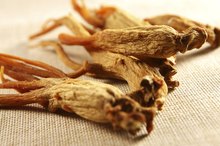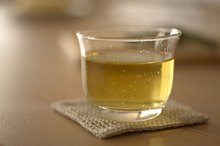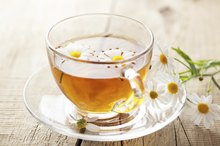What does fact checked mean?
At Healthfully, we strive to deliver objective content that is accurate and up-to-date. Our team periodically reviews articles in order to ensure content quality. The sources cited below consist of evidence from peer-reviewed journals, prominent medical organizations, academic associations, and government data.
- "Nutrition & Metabolism"; Lotus Leaf Extract and L-carnitine Influence Different Processes During the Adipocyte Life Cycle; 2010
- "Journal of Ethnopharmacology": Anti-Obesity Effect of Nelumbo Nucifera Leaves Extract in Mice and Rats; 2006
- "Journal of Ethnopharmacology": Anti-Obesity Effect of Nelumbo Nucifera Leaves Extract in Mice and Rats; 2006
The information contained on this site is for informational purposes only, and should not be used as a substitute for the advice of a professional health care provider. Please check with the appropriate physician regarding health questions and concerns. Although we strive to deliver accurate and up-to-date information, no guarantee to that effect is made.
Lotus Leaf and Weight Loss
Lotus leaf is a flowering aquatic perennial that grows widely throughout tropical regions of Asia and the Middle East. The pale green leaves are flat and broad, reaching up to 18 inches in diameter. The leaves are usually collected in the summer and autumn and dried before being cut into small pieces, powdered or processed into pills. Lotus leaves are touted to be useful in treating a variety of conditions, including heavy bleeding, diarrhea and muscle spasms.
History
The lotus has historically played an important role in both the religion and medicine of many cultures. According to Plant Cultures, the lotus "has been held sacred in Asia and the Middle East for over 5,000 years." Texts from India dated to the 11th and 12th centuries discuss meals that feature lotus leaves. The resilient plant was considered a symbol of immortality for the ancient Egyptians who also made use of it in their diet.
- The lotus has historically played an important role in both the religion and medicine of many cultures.
- According to Plant Cultures, the lotus "has been held sacred in Asia and the Middle East for over 5,000 years."
Expert Insight
Are There Dangers of Lotus Tea?
Learn More
The long history and varied claims have led to extensive research on the potential use of lotus leaf. According to a study in "Nutrition & Metabolism," lotus leaf extract, when combined with L-carnitine, "might represent a treatment option for obesity-related diseases." The mixture was shown to prevent adipogenesis, the formation of fatty tissue 1. Research conducted by Japanese scientists had similar results. The study monitored the effects of lotus leaf extract on obese mice for five weeks. The results showed that lotus leaf slowed the absorption of fat and carbohydrates, increased energy expenditure and accelerated lipid metabolism. Lotus leaf also prevented the increase of body weight.
- The long history and varied claims have led to extensive research on the potential use of lotus leaf.
- The results showed that lotus leaf slowed the absorption of fat and carbohydrates, increased energy expenditure and accelerated lipid metabolism.
Potential
Lotus leaves contain high concentrations of phytochemicals, compounds produced by plants to defend themselves against bacterial and fungal infections. The substances found in lotus leaf extract include alkaloids, flavonoids and tannins. The isoquinoline alkaloids in lotus leaves have sedative and antispasmodic properties, which may aid in digestion. Both flavonoids and tannins are powerful antioxidants that have been connected with weight loss and cardiovascular health.
- Lotus leaves contain high concentrations of phytochemicals, compounds produced by plants to defend themselves against bacterial and fungal infections.
- The isoquinoline alkaloids in lotus leaves have sedative and antispasmodic properties, which may aid in digestion.
Uses
What Are the Health Benefits of Bay Leaves?
Learn More
Dried lotus leaf can be used in preparing a meal, though it has a bitter flavor. The leaves can also be brewed into a tea. Lotus leaf is also available in capsule and pill form, which can be taken as an alternative to the bitter leaves.
Warning
There is a lack of research regarding the effects of lotus leaf in pregnant women and it should be avoided. Lotus leaf may cause gastrointestinal irritation. Lotus leaf may increase the risk of bleeding and should not be used in conjunction with blood thinners, including aspirin. Consult your doctor before beginning treatment.
- There is a lack of research regarding the effects of lotus leaf in pregnant women and it should be avoided.
Related Articles
References
- "Nutrition & Metabolism"; Lotus Leaf Extract and L-carnitine Influence Different Processes During the Adipocyte Life Cycle; 2010
- "Journal of Ethnopharmacology": Anti-Obesity Effect of Nelumbo Nucifera Leaves Extract in Mice and Rats; 2006
- Lotus root. Food Literacy Center. Updated 2019.
- Lotus root, cooked, boiled, drained, without salt. FoodData Central. U.S. Department of Agriculture. Published April 1, 2019.
- GI foods advanced search, lotus root powder. University of Sydney. Updated 2019.
- Potassium: Fact Sheets for Health Professionals. National Institutes of Health, Office of Dietary Supplements. Updated March 2, 2020.
- How to eat more fruits and vegetables. American Heart Association. Updated 2020.
- Constipation. University of California San Francisco Health.
- Folate: Fact Sheets for Health Professionals. National Institutes of Health, Office of Dietary Supplements. Updated 2020.
- Kaneyasu M, Nagata M, Ikeda H, Ohnuki K, Shimizu K. Anti-allergic activity of lotus root (Nelumbo nucifera) powder in TDI-sensitized nasal allergy model mice. Food and Agricultural Immunology. 2019:30(1);968–978. doi:10.1080/09540105.2019.1651255
- Food allergy. American College of Allergy, Asthma & Immunology. Updated 2014.
Writer Bio
Jonathan Thompson is a personal trainer certified through the American Council on Exercise and has extensive experience working with clients as well as teaching. Thompson holds specializations in longevity nutrition and muscle management for runners. He began writing in 2004.

